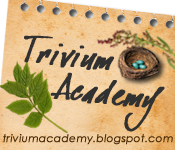I have several books I wish to review for science, ones that are not mentioned often in my homeschooling circles and selections I've made for our own learning experience or ones I have seriously considered. This is Science Reviews - Part 1, which will be followed by probably two more posts which I will add the links as the posts are done.
I'll start with The Animal Atlas by Anita Ganeri published by Hammond.
ISBN 0-8437-0918-9
We will be using Galloping the Globe in kindergarten next year and for science we will be focusing on biomes and world geography (landforms and political), getting acquainted with the world. I went to Barnes & Noble and pulled every single animal encyclopedia and atlas from the shelf and compared them all.
The Animal Atlas stood out for me because it is organized well, the chapters are regions and types of biomes. First there's a two page spread about the World with a map showing where all the different biomes are in the world. This is an overview of what will be covered in the book.
In the North America page spread, there is a physical map of North America that shows the mountain ranges, including snow covered peaks, labels the major areas of water and places a silhouette of animals found all over the map from the Arctic Ocean to the Caribbean Sea where North America meets South America. There is a fabulous picture of an desert biome with various animals that would lend itself well for identifying the food chain. The next two page spread, still for North America, is a closer look at the animals from Forest and Tundra.
In each chapter the same format follows, map with physical geography, a biome(s) highlighted from the area, one or more pictures of several animals in a habitat.
How the book is organized:
North America - Forest and Tundra
South America - Mountain and Grassland
South America - Amazon Rain Forest
Africa - Rain Forest
Africa - Grassland and Desert
Europe
Asia - Forest, Grasslands, and Desert
Asia - Southeast Asian Rain Forest
Australasia
The Oceans
Polar Regions
This is an excellent book for kindergarten, a great "meet the world" type of book that isn't overwhelming or too busy with graphics. I also looked at Animal Atlas by Two Can Publishing ISBN 1-58728-098-1 and while it covers the same information it is also very busy and in my opinion is not of the same quality as Hammond's book.
For our first grade animal studies, I chose a different book because we will be diving into more information at that point. Again with the pile of book in front of me at Barnes & Noble including many of the favorites I see online like DK's Encyclopedia of Animals, I chose another DK book, Animals: A Visual Encyclopedia. I do not have the book to review it, I put it back on the shelf after copying its ISBN number to find the best price online. Amazon does offer an inside view.
--------------------------
Learning from the Land: Teaching Ecology Through Stories and Activities by Brian "Fox" Ellis, ISBN 1-56308-563-1The author had two goals in mind when writing this book: to provide opportunities for adventure and empathy while bringing scientific facts to life and to teach basic science skills while integrating storytelling and creative writing.
Can you say living book? If you have ever witnessed a storyteller in person, you may have walked away with the same feeling as I did, I would love to learn how to do that! This book teaches you how while building scientific knowledge through experiments and creative writing assignments.
The book contains nine original stories that incorporate an array of scientific concepts. The stories can be adapted for any age level, the author says that the combination of unusual facts, poetic metaphor and allusions to the complexity of nature can hold the attention of younger children as well as professional naturalists.
Following each story are student-tested activities as well as the activities within each story that are easily adapted to various grade levels with more or less pre-teaching and step-by-step coaching. The author says this book is just a starting point, his ultimate goal is to have students move into the outdoors and observe ecological processes firsthand, measuring and evaluating what they observe and then creating stories to tell their peers.
This book would be perfect for a group but can be used in an individual homeschool, I envision a fabulous co-op class following this book.
Here's a look at one of the chapters, Walter the Water Molecule. On the introduction page there is a quote by Percy Bysshe Shelley from The Cloud - "I bring fresh showers for the thirsting flowers, From the seas and the streams" then after 4 pages of story (fabulous!) there are follow-up ideas for "Walter the Water Molecule" including:
- Correlating Maps and Diagrams
highlighting observation, communication, prediction and inference science skills. The materials used are The Water Cycle worksheet (provided), photocopies of each of the following:
1. outline map of the world
2. outline map of the United States
3. outline map of your city
4. outline of the human body
There are several different activities to do:
1. Using a world map, students trace global weather patterns; jet streams; and the path of water from the sea to a cloud to an aquifer or other water source, and back to the sea. More suggestions provided.
2. Using a national map, students trace local weather patterns and the path of water from the ocean; to the clouds; to the river, lake or aquifer that provides drinking water for their city; to the city and back to the sea.
3. With a map of their city, students map their local water supply. (Condensing and paraphasing) Treatment plant to their home; the home's plumbing system and wastewater plumbing back to the treatment plant.
4. With the diagram of the body, students map the circulatory system. More suggestions provided.
-The Circular Storytelling Game
Students are to write their own version of the water cycle story
- How Much of Me is Water?
metric measurement and prediction
Materials: Bathroom scale, worksheet (provided), buckets, water, sand or hair, leather, bones
Instructions follow
-How Much of This is Water?
metric measurement, classification, communication, identify variables, design investigations
Materials: Fresh and dried foods, pencil and paper, metric scales
Dehydration is discussed and students measure the amount of water in various foods. (Instructions follow)
-Evaporation
metric measurement, prediction, design investigations
Materials: glass jars, water, salt, food coloring, flower or leafy branch, microscope, slide showing stomata, barometer, thermometer, hygrometer
and to end the chapter of Walter the Water Molecule, there is a picture for younger students to use to trace the possible routes of Walter through the water cycle.
In other chapters, other books are recommended for extra reading and some for experiments. The Lorax by Dr. Suess is included to explore social action and citizenship.
This book provides so many elements for just nine stories, it is an excellent resource for studying ecology and a perfect unit study. I actually feel a bit spoiled, after seeing something that weaves fables, tall tales with scientific inquiry- I want this approach for all our science studies! All the different fields of science are touched with the nine stories, there are elements of chemistry, physical science, life science and definitely earth science intertwined within the experiments and stories.
*This book does include evolutionary content and I implore that anyone considering it attempt to get it from your library to preview first as I do with any of the books I review.





























1 comment:
Thank you for your useful science reviews. I'm always on the search for good science resources.
Kathy @ www.restorationplace.typepad.com
Post a Comment